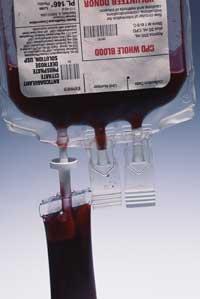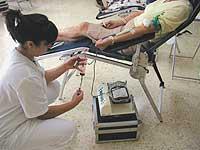Long background race looking for artificial blood
2001/07/08 Mendiburu, Joana - Elhuyar Zientziaren Komunikazioa
Tour of France began yesterday and after what happened in the Giro, we will be waiting for what can happen around doping. The fall in EPO use has its substitute: HemAssist and RSR13 products that can replace blood in blood transfusions but are still under investigation.
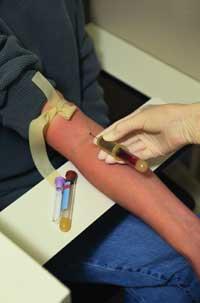
Just knowing that blood circulates throughout the body began the race to find its substitute. The doctors obtained the first blood transmission in 1667, but when they found that the recipients died, this path was abandoned. However, since 1868, researchers began using hemoglobin solutions. Hemoglobin is a protein that carries oxygen in red blood cells.
The first stage of the race was successful in 1883. The Ringer solution of sodium chloride, potassium and calcium was prepared in 1883 and served to solve the decrease in blood loss pressure. It was a great leap to overcome bleeding. Subsequently, the doctors added lactate and remains the most widely used solution to rebuild blood volume.
However, blood transfusions have made great strides, and coagulation, bacterial contamination and mechanisms between blood groups are becoming less and less secret for doctors. The current problem is the shortage of blood donors. For this reason, the search for a substitute for blood is a constant, although throughout its history several times have to be cited. World War II and, above all, the Vietnam War, were the first two times that revealed the limits of blood transfusions. Subsequently, in the 1980s, when hepatitis spread noticeably and the HIV virus appeared, the number of blood donors decreased markedly and, again, the research phase was reactivated.
Need for blood donors
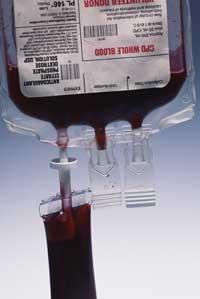
In case of severe bleeding, blood remains the most appropriate – and often the only – option. Therefore, it is important to maintain and increase the number of blood donors.
But the blood has some inescapable drawbacks: in summer the number of donors decreases considerably; blood cannot be stored for more than six weeks; in case of emergency, it is difficult to ensure compatibility between the blood groups of the donor and the recipient; in addition, the transport of blood bags in the ambulance is not comfortable, since the blood must be stored in cold; in addition, one in ten blood recipients suffers post-transfusion reactions, although not serious.
Responding to needs
The reasons for finding a blood-substituting solution are not scarce. The results also begin to be perceived, although surprises are still expected more than one.
One of the products they have studied based on human hemoglobin is Baxter's HemAssist, for DCLHd scientists (diaspirin cross linked hemoglobin). In clinical trials, the mortality rate was higher than expected, which questioned the efficacy and safety of the product.
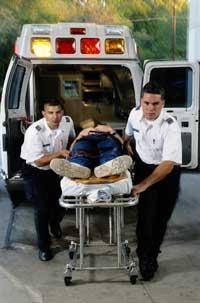
Therefore, since 1998, research has been exploring a new path. The idea is to introduce genetic information into the DNA to make a protein. Thus, DNA would give the cell the order to produce protein. In the case of blood, the protein to produce would be hemoglobin. In addition, the modification of the molecular structure of hemoglobin can modify the properties of the protein, resulting in hemoglobins that respond to specific clinical uses.
Artificial blood in emergencies and cycling
It is being designed to use artificial blood as a substitute for blood in an emergency, but in this race medicine has remained as in other occasions after elite sport. Although the results of clinical research are worse, cyclists use the HemAssista to dop, as in the Giro. HemAssista is a synthetic hemoglobin in which cyclists tend to carry more oxygen in the veins, greatly increasing physical capacity with more oxygen. According to doctors, the artificial irruption of any substance that the body produces naturally is always a danger, and although in this case can not be spoken with certainty, it can cause the explosion of red blood cells.
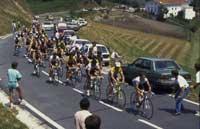
Another product used in cycling is the RSR13 from Allos Therapeutics. This is a small synthetic molecule that causes hemoglobins to release more oxygen. It can be taken as a pill or vein, but it is still in the research phase. It is mainly designed to improve curative cancer treatments and to use anoxia in severe cases. At the moment he has treated cancer patients who are undergoing radioactive treatment and has given a good level of tolerance, but it is too early to fully verify its effectiveness.
Published in 7K

Gai honi buruzko eduki gehiago
Elhuyarrek garatutako teknologia




